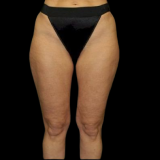Contents
When Can I Start Exercising After Abdominal Surgery?
Recovery from abdominal surgery is a delicate process that requires time and patience. If you’re wondering how long after abdominal surgery can you exercise, it’s crucial to follow standard guidelines for a safe and effective recovery:
- First 0-2 Weeks: Only light movements like walking.
- 2-6 Weeks: Gentle exercises; no heavy lifting or intense activities.
- 6-12 Weeks: Begin aerobic and more strenuous activities only with doctor’s approval.
While the above provides a general timeline, recovery varies widely depending on the type of surgery, your physical condition, and the advice of your surgeon.
I’m Dr. Shlomo Widder, a Board-certified plastic surgeon with decades of experience in helping patients recover safely after surgery.
Now, let’s dig deeper into these phases and understand why following this timeline is essential for a smooth recovery.
Simple how long after abdominal surgery can you exercise word guide:
– how long after a tummy tuck can i workout
– exercise following abdominal surgery
– exercises after tummy tuck
Understanding the Recovery Timeline
Initial Recovery Phase (0-2 Weeks)
During the first two weeks after abdominal surgery, your body is in full-on healing mode. This period is critical for setting the stage for a smooth recovery.
Light Movement and Walking
Start with light movements, such as walking. This helps improve blood circulation and prevents complications like blood clots. However, avoid any strenuous activities. Walking short distances around your home is usually enough.
Rest is Crucial
Your body needs ample rest to heal both internally and externally. Don’t push yourself. Listen to your body — if you feel pain or discomfort, it’s a sign you need more rest.

Intermediate Recovery Phase (2-6 Weeks)
As you progress into the 2-6 weeks phase, you can start incorporating gentle exercises. However, you should avoid heavy lifting and any activities that strain your abdominal muscles.
Avoid Heavy Lifting
For the first six weeks, avoid lifting anything heavier than 13 pounds. A good rule of thumb is: if you can’t lift something comfortably with one hand, don’t lift it. Always ask for help when needed.
Gentle Exercises
You can begin with exercises like pelvic tilts, heel slides, and knee rolls. These exercises are designed to gently engage your core without putting too much strain on your healing tissues.
Listen to Your Body
Everyone heals at a different pace. Pay attention to how you feel during and after exercises. If you experience pain or discomfort, scale back your activities and consult your doctor.
Advanced Recovery Phase (6-12 Weeks)
By the time you reach the 6-12 weeks phase, most people can safely return to more strenuous activities, but only with their doctor’s approval.
Aerobic Exercise
Around the 9-week mark, you can often start incorporating aerobic exercises like swimming or light jogging. These activities help improve cardiovascular health and further aid in muscle recovery.
More Strenuous Activities
You can gradually reintroduce more strenuous activities, such as resistance training or core strengthening exercises. However, get the green light from your doctor before doing so.
Doctor’s Approval
Always consult your surgeon before starting any new exercise regimen. They can provide personalized advice based on your specific surgery and overall health condition.

Following these guidelines can help ensure a safe and effective recovery. Up next, let’s explore the benefits of post-abdominal surgery exercise and how it can aid in your overall well-being.
Benefits of Post-Abdominal Surgery Exercise
Physical Benefits
Muscle Strength
After abdominal surgery, your muscles need time to heal. Controlled exercises help rebuild muscle strength without harming the surgical area. Once your doctor gives you the go-ahead, exercises like pelvic tilts and heel slides can help you regain core strength.
Pain Relief
Light movement can alleviate muscle spasms and reduce pain. Walking, for instance, boosts blood flow, which helps in pain management. It also aids in lung function and bowel recovery, making you feel better overall.
Improved Circulation
Early walking and gentle exercises improve circulation, reducing the risk of blood clots and infections. Improved blood flow also speeds up the healing process by delivering more oxygen and nutrients to your tissues.
Posture Improvement
Weak abdominal muscles can lead to poor posture and back pain. Strengthening these muscles through exercise helps you stand straighter and reduces strain on your back. This can make daily activities more comfortable and less painful.
Reduced Back Pain
Strengthening your core muscles can significantly reduce back pain. When your abdominal muscles are weak, your back muscles have to work harder, leading to discomfort. Exercises that target your core can help balance this load.
Mental and Emotional Benefits
Reduced Stress
Exercise is a great stress reliever. Gentle activities like walking or swimming can help you relax and reduce anxiety. This is especially important during recovery when stress levels can be high.
Improved Mood
Physical activity releases endorphins, the body’s natural mood lifters. Even light exercise can make you feel happier and more positive. This can be a big boost during the often challenging recovery period.
Increased Energy Levels
You might feel tired and lethargic after surgery. Gradual exercise can help combat this fatigue. As your strength and stamina improve, you’ll find yourself feeling more energetic and ready to take on daily tasks.
Incorporating these exercises into your recovery plan can make a significant difference in how you feel physically and emotionally. Always consult with your doctor before starting any new exercise regimen to ensure it’s safe for your specific situation. Up next, we’ll discuss safe exercises to start with.
Safe Exercises to Start With
Pelvic Tilt
Timeline: 2-4 weeks after surgery
How to Do It:
1. Lie on your back with your knees bent.
2. Gently rock your pelvis upwards, flattening your back into the bed or floor.
3. Note: You should feel a slight tightening in your abdominal muscles.
4. Return to the starting position and repeat.
Repetitions: Start with 5 repetitions, 2-3 times a day. Gradually increase to 20 repetitions as your strength improves.
Benefits: This gentle movement helps re-engage your abdominal muscles, promoting core strength without straining your surgical site.
Heel Slides
Timeline: 2-4 weeks after surgery
How to Do It:
1. Lie on your back with your legs flat on the bed or floor.
2. Slowly slide one heel towards your buttocks, keeping your heel in contact with the bed or floor.
3. Note: Stop when you feel slight discomfort or pressure inside your knee.
4. Hold for about 5 seconds, then slide your heel back down to the starting position.
5. Repeat on the opposite side.
Repetitions: Aim for 5 repetitions on each side before switching.
Benefits: This exercise focuses on knee bending and leg movement, helping to maintain flexibility and reduce stiffness.
Knee Rolls
Timeline: 2-4 weeks after surgery
How to Do It:
1. Lie on your back with your knees bent and arms out to your sides.
2. Keep your knees and ankles together and slowly let your knees drop to one side.
3. Carefully tighten your abdominal muscles and roll your knees to the other side.
4. Note: Try to keep your shoulders down and your head relaxed, looking up.
Repetitions: Start with 5 repetitions, 2-3 times a day. Gradually increase the range of motion and build up to 20 repetitions.
Benefits: This side-to-side movement engages your core muscles, improving flexibility and reducing stiffness in the lower back.
These exercises are designed to be gentle and safe for the early stages of your recovery. Always listen to your body and stop if you feel any pain or discomfort. Up next, we’ll discuss when you can begin to exercise after abdominal surgery.
When Can I Begin to Exercise After Abdominal Surgery?
Light Exercises (0-2 Weeks)
Initial Rest and Gradual Increase
Right after abdominal surgery, rest is crucial. Your body needs time to heal, and it’s important not to push yourself too soon. However, this doesn’t mean you should stay in bed all day. Gentle movement can actually help with your recovery.
Walking
Start with short, slow walks around your house. Walking boosts circulation and helps prevent blood clots. As you feel more comfortable, gradually increase the distance and pace.
Deep Breathing and Circulation Exercises
Deep breathing exercises are essential in the first two weeks. They help keep your lungs clear and improve blood flow. Sit upright, take a deep breath in, hold for a few seconds, and then slowly exhale. Repeat this several times a day.
For circulation, try ankle pumps. While sitting or lying down, bend your feet up and down for about a minute. This simple exercise helps maintain good blood flow in your legs.
Moderate Exercises (2-6 Weeks)
Pelvic Tilts, Heel Slides, and Knee Rolls
As you move into the 2-6 week period, you can start incorporating more gentle exercises like pelvic tilts, heel slides, and knee rolls. These exercises help re-engage your abdominal muscles without straining your surgical site.
Pelvic Tilts
- Lie on your back with knees bent.
- Rock your pelvis upward, flattening your back against the floor.
- Hold for a few seconds, then return to the starting position.
Heel Slides
- Lie on your back with legs flat.
- Slide one heel toward your buttocks, keeping it in contact with the floor.
- Hold for a few seconds, then slide it back down.
Knee Rolls
- Lie on your back with knees bent and arms out.
- Let your knees drop to one side, then the other, while keeping your shoulders down.
Strenuous Exercises (6-12 Weeks)
Aerobic Exercise, Resistance Training, and Core Strengthening
After 6-12 weeks, and with your doctor’s approval, you can start more strenuous activities. This might include aerobic exercises like swimming or light jogging, as well as resistance training and core strengthening exercises.
Aerobic Exercise
Swimming is an excellent option because it provides a full-body workout without putting too much strain on your abdominal muscles. Start with light swimming and gradually increase intensity.
Resistance Training
Begin with light resistance bands or small weights. Focus on exercises that don’t overly strain your core, such as seated rows or leg presses.
Core Strengthening
Planks are a great way to strengthen your core. Start with short holds and gradually increase the time as your strength improves. Ensure your form is correct to avoid any undue stress on your healing abdomen.
Always remember, the key is to listen to your body and consult your doctor before starting any new exercise regimen. Up next, we’ll address some frequently asked questions about post-surgery exercise.
Frequently Asked Questions about Post-Surgery Exercise
What Happens if You Exercise Too Soon?
Exercising too soon after abdominal surgery can lead to several complications:
- Delayed Healing: Your body needs time to heal both internally and externally. Pushing yourself too early can slow down this process.
- Increased Pain: Straining your surgical site can cause significant pain and discomfort.
- Risk of Complications: Too much activity can increase the risk of hernias or other complications. In a survey of surgical services, 26.2% of services recommended pain-adapted restrictions on heavy lifting after laparotomy to prevent such issues.
It’s crucial to listen to your body and follow your surgeon’s advice. If you experience any pain or discomfort, it’s a sign that you need more rest.
How Can I Flatten My Stomach After Abdominal Surgery?
Flattening your stomach after surgery is a gradual process that involves a combination of exercises and a healthy diet:
- Start with Gentle Abdominal Exercises: Around 6-8 weeks post-surgery, you can begin with exercises like abdominal hollowing and curl-ups. These exercises help re-engage your abdominal muscles without putting too much strain on your surgical site.
- Maintain a Healthy Diet: Eating a balanced diet rich in proteins, vitamins, and minerals supports your body’s healing process and helps maintain a healthy weight.
- Gradual Progression: As you continue to recover, you can incorporate more advanced exercises like planks and aerobic activities. Always get your doctor’s approval before starting new exercises.
When Can I Lift Weights After Laparoscopic Surgery?
Lifting weights after laparoscopic surgery should be approached with caution:
- Initial Rest Period: For the first 4-8 weeks, avoid any heavy lifting. Focus on light activities like walking to boost circulation and prevent blood clots.
- Gradual Increase: After the initial recovery period, and with your doctor’s approval, you can start incorporating light resistance training. Begin with small weights or resistance bands and gradually increase the intensity.
- Doctor’s Approval: Always consult your doctor before starting any weightlifting regimen. They can provide personalized advice based on your specific surgery and recovery progress.
By following these guidelines, you can ensure a safe and effective return to exercise after abdominal surgery.
Conclusion
At Widder Cosmetic and Plastic Surgery Center, we understand that each patient’s recovery journey is unique. Our goal is to provide personalized care custom to your specific needs to ensure a safe and effective recovery.
Dr. Shlomo Widder and our team of experts are committed to guiding you through every step of your post-surgery recovery. From the initial rest period to gradually increasing your activity levels, we emphasize the importance of listening to your body and following your surgeon’s advice.
Safe recovery is our top priority. We encourage you to start with light activities like walking and deep breathing exercises in the first few weeks. As your body heals, you can gradually introduce more moderate exercises, such as pelvic tilts and heel slides. Eventually, with your doctor’s approval, you can progress to more strenuous activities like aerobic exercise and resistance training.
By following these guidelines and maintaining open communication with your healthcare team, you can ensure a smooth and successful recovery after abdominal surgery.
For more information on post-surgery exercises and personalized care, visit our Tummy Tuck Photo Gallery to see the results of our expert care.
Your recovery is a journey, and we’re here to support you every step of the way.






